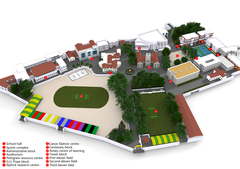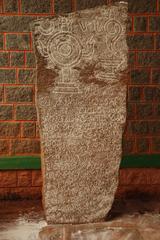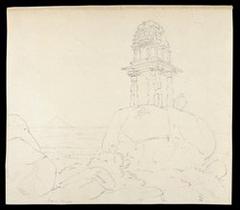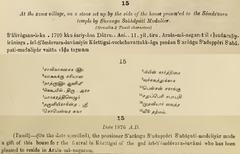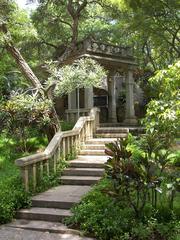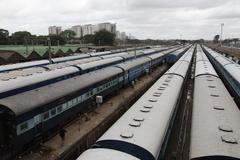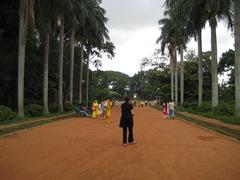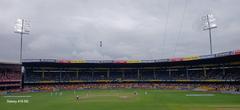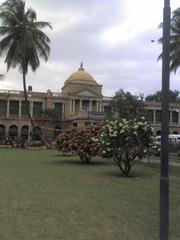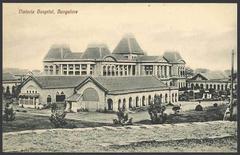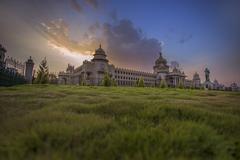Dharmaraya Swamy Temple Bengaluru: Visiting Hours, Tickets, and Complete Visitor Guide
Date: 04/07/2025
Introduction: Exploring the Legacy of Dharmaraya Swamy Temple
Situated in the old city of Bengaluru, the Dharmaraya Swamy Temple stands as a beacon of religious, architectural, and cultural heritage. With roots extending over 800 years, this temple is unique for its dedication to the Pandavas and Draupadi from the Mahabharata, making it a rare spiritual destination in India. Its origins are linked to the Vahni Kula Kshatriyas and the Chalukya dynasty, while the Thigala community has preserved its rituals and vibrant traditions through centuries. The temple’s blend of Dravidian, Western Ganga, Pallava, and Vijayanagara architectural influences is evident in its grand gopuram, intricate carvings, and gold-plated deities.
A visit to Dharmaraya Swamy Temple offers not just spiritual fulfillment but an immersive cultural experience. The annual Karaga Festival, a spectacular event that draws thousands, is a highlight, while the temple’s proximity to other historical sites such as Bangalore Fort and Tipu Sultan’s Summer Palace makes it central to any cultural exploration of Bengaluru.
For comprehensive planning, visitors can refer to resources like Atmanirvana’s guide and Culture and Heritage’s festival coverage.
Table of Contents
- Historical Background
- Architectural Features
- Visiting Hours & Entry Details
- Accessibility & Facilities
- Guided Tours & Special Events
- Location & Transportation
- Festivals & Rituals
- Cultural Significance
- Visitor Tips & FAQs
- Nearby Attractions
- Visuals & Media Suggestions
- References
Historical Background
The Dharmaraya Swamy Temple’s origins trace back to the Vahni Kula Kshatriyas, with possible connections to the Chalukya dynasty. Stone inscriptions and oral traditions highlight its ancient roots, pre-dating Bengaluru itself. The Thigala community has maintained the temple since inception, integrating their agricultural heritage into temple customs and celebrations.
Architectural Features
Dravidian and Multi-Dynastic Influences
- Gopuram & Facade: The temple’s multi-tiered gopuram, adorned with vibrant stucco figures and gold-plated finials, is a striking landmark.
- Sanctum Sanctorum: Houses gold-plated idols of Dharmaraya (Yudhishthira), Draupadi, and the Pandavas, a rare dedication in Hindu temples.
- Mandapas & Pillars: Expansive halls feature detailed carvings depicting scenes from the Mahabharata, floral motifs, and mythological creatures, reflecting contributions from multiple dynasties.
Visiting Hours & Entry Details
- Timings: 6:00 AM – 12:00 PM; 5:00 PM – 8:30 PM daily.
(During major festivals like Karaga, timings may extend and crowds increase.) - Entry Fee: Free for all visitors. Donations are welcome.
- Photography: Allowed in exterior areas; restrictions apply inside the sanctum. Always seek permission before photographing rituals.
Accessibility & Facilities
- Wheelchair Access: Ramps are provided at main entrances. Assistance for differently-abled visitors is available upon request.
- Facilities: Restrooms and drinking water are available, though facilities may be crowded during festivals.
- Dress Code: Modest attire required; removal of footwear is mandatory before entering inner sanctums.
Guided Tours & Special Events
- Guided Tours: Can be arranged via local tour operators or temple authorities, especially around the Karaga Festival.
- Special Events: Apart from daily rituals, major festivals such as Karaga, Navaratri, Deepavali, and Ugadi are celebrated with grandeur and community participation.
Location & Transportation
- Address: Nagarathpet, Bengaluru, Karnataka.
- By Air: 36 km from Kempegowda International Airport.
- By Rail: 5 km from KSR City Railway Junction (Majestic).
- By Metro: Closest stations are KR Market and Chikpet.
- By Road: Well-connected via BMTC buses, auto-rickshaws, and taxis.
The temple’s central location makes it a pivotal stop for those exploring Bengaluru’s historical and cultural circuit.
Festivals & Rituals
The Karaga Festival
A hallmark of the temple, the Karaga Festival is held annually in March or April and spans 9–11 days. The highlight is a midnight procession where a priest, embodying Draupadi, carries the sacred Karaga through historic city neighborhoods. The festival features music, dance, and traditional performances, reflecting the Thigala community’s heritage (Hindu Blog, Culture and Heritage).
Other significant festivals include:
- Navaratri: Devotional singing, elaborate decorations, and special pujas.
- Deepavali: Temple illuminated with lamps and festive offerings.
- Ugadi: New Year rituals and prayers for prosperity.
Daily Rituals
- Abhishekam: Morning bathing of deities.
- Naivedyam: Food offerings, distributed as prasad.
- Aarti: Performed multiple times daily with devotional hymns (Poojn.in).
Cultural Significance
- Dedication to Pandavas & Draupadi: Emphasizes dharma, strength, and feminine power—unique among Indian temples.
- Community Unity: Festivals unite diverse communities, fostering interfaith harmony.
- Living Heritage: The temple is a venue for music, dance, and theater that narrate local legends, promoting cultural continuity.
Visitor Tips & FAQs
Tips for Visitors
- Visit during weekdays for a serene experience; festivals are best for cultural immersion.
- Modest dress and respectful conduct are appreciated.
- Engage local guides for deeper insights.
- Carry drinking water and be prepared for walking in the vicinity.
Frequently Asked Questions
Q: What are the visiting hours?
A: 6:00 AM – 12:00 PM and 5:00 PM – 8:30 PM daily.
Q: Is entry free?
A: Yes, entry is free; donations are welcome.
Q: How to reach the temple?
A: Accessible via metro (KR Market/Chikpet), bus, taxi, or auto-rickshaw.
Q: When is the Karaga Festival?
A: March–April, for 9–11 days.
Q: Are guided tours available?
A: Yes, by prior arrangement.
Q: Is the temple accessible to people with disabilities?
A: Yes, most areas are wheelchair accessible.
Q: Can I take photographs?
A: Allowed in outer areas; seek permission for interior photography.
Nearby Attractions
- Bangalore Fort
- Tipu Sultan’s Summer Palace
- KR Market
- Shrungagiri Sri Shanmukha Swami Gudi
These sites, along with the bustling markets and artisans of Nagarathpet, offer an expanded cultural exploration.
Visuals & Media Suggestions
- Temple Gopuram: “Dharmaraya Swamy Temple gopuram with colorful stucco figures”
- Sanctum Sanctorum: “Interior view with gold-plated deities”
- Karaga Festival: “Procession led by Karaga carrier at night”
- Location Map: Highlighting the temple within Bengaluru’s old city
References
- Atmanirvana: Sri Dharmaraya Swamy Temple Guide
- Culture and Heritage: Karaga Festival
- Poojn.in: Rituals and Practices
- Kwickhunt.in: Visitor Guide
- Hindu Blog: Karaga Festival
- Native Planet: Temple Overview
- Templeyatri.in: Temple Details
- Karnataka.com: Temple Information
- Oneindia.com: Temple Overview
- Ramadabengaluru.blogspot.com: Festivals
- Agoda.com: Karaga Festival Travel Guide
Plan Your Visit
Dharmaraya Swamy Temple is a living monument to Bengaluru’s multifaceted history and spiritual vibrancy. Experience its unique blend of mythology, architecture, and community spirit—whether during the spectacular Karaga Festival or in the peaceful ambiance of daily rituals. For the latest updates, guided audio tours, and virtual experiences, download the Audiala app and follow us on social media.

